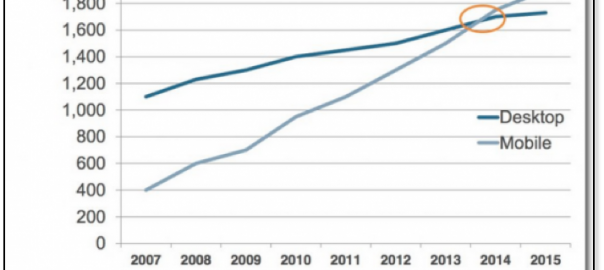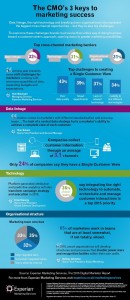There has never been a better time to be a smartphone user. At the same time there has never been a more challenging time to be an app developer. With the rapid proliferation of smartphones across the globe and the staggering increase in the number of apps in the app stores, the app economy is booming and one that is growing by the second. Mobile usage was predicted to overtake desktop, back in 2008 by Mary Meeker. Well we are now way past the tipping point. A study by Comscore shows that mobile marketing is no longer a good-to-have; it is now an integral part of mobile growth strategy.

The Rush Towards Downloads: Quantity vs. Quality
Hundreds of thousands of apps are added to the app stores every month and yet only a miniscule number of those become successful. Developing an app that cuts through the noise and achieves stellar success is no mean feat. However, in the race to the top, number of downloads of an app has become one of the most important areas of focus for app developers.
After all, if an app gets hundreds and millions of downloads that would mean it would be successful right?
Unfortunately that is not quite the reality. User acquisition is often looked at as a means to an end for developers to achieve app success. Too much focus is put on quantity and very little on quality. What that means is that developers are focusing on acquiring as many mobile users as they possible can at an optimal cost. However, acquiring a ton of users by itself doesn’t translate into engaged users. The business model being used for acquisition today is unbalanced as more emphasis is being given on acquiring users without really having insight into the quality of users being acquired and their subsequent lifetime-value.

User acquisition today is vastly limited because there is little or no insight into who is being acquired. The mobile world is greatly lagging behind the desktop world in user profiling due to the limited reach of cookies. Most companies that provide user acquisition services provide some level of targeting but that is not nearly enough. The dollars spent in acquiring users are not resulting in corresponding money spent by the users in the apps (Lifetime value) nor is it resulting in increased engagement.
Clearly user acquisition as it is being done today needs to change.
Shift Towards Interest Based Acquisition
It has become crucial for app developers to optimize their user acquisition costs and hedge their bets on acquiring users who are presumably a better fit for their app and thus will likely be more engaged and spend more dollars within the app. Mobile user understanding should be front and center of the acquisition strategy for developers. It is only when developers know exactly what type of mobile users to acquire that they can stand a chance to obtain highly engaged users for their app.
Most user acquisition companies allow some level of targeting like country, operating system, age and high level interests. What is missing is holistic insight into the users’ interests. It is important to note that such companies do not generate this interest data themselves. They allow developers to key in interests as targeting options. Often, developers go by their gut and merely have some assumptions for choosing what interests to target users on.
However, this is majorly incomplete.
In order to have deep insight into user behavior and their likes and dislikes, data companies must be able to ingest data from multiple sources (app, social, web, context) and be able to infer interests based on those sources. Companies like Facebook, Twitter, and more recently, Personagraph do just that. What these companies are able to do is to generate rich interest and intent segments for mobile users and create robust user profiles for each of those users.

Source: Illustration of a user profile created by Personagraph
Impact Of Interest Based User Acquisition
The shift towards interest-based acquisition can be a game changer for developers. They can now optimize money spent on user acquisition by only focusing on acquiring the users that are right for their app. Typically the “right” mobile user is one whose interests and intents are aligned with what the app offers. There are many advantages to acquiring the right mobile users, such as:
- Boost in-app engagement: Users that download an app that matches what they are truly interested in will end up using the app a lot more as opposed to someone who was acquired by a blanket acquisition method. Developers can personalize the in-app experience based on their users’ interests and thus greatly improve the user experience.
- Optimize costs: Interest based acquisition can help developers optimize their marketing dollars. By knowing the interests, demographics and intents of your high value users, developers can run acquisition campaigns targeting look-alikes of those high value users. The idea is to try to target users with the same attributes as the high value users of an app. It has been seen that such targeting is beneficial in two ways, lowering costs and increasing revenue. Bottom line is, even if the CPI doesn’t reduce much, it is still a better investment than the blanket targeting being done so far.
- Maximize revenue: User profile data also directly impacts the monetization strategy for mobile. By appending user interest data to each ad call within an app, the value of that inventory instantly becomes higher. Simply put, advertisers will be willing to pay a lot more money to publishers if they know who exactly is seeing their ad. Developers thus greatly increase the odds of earning more revenue through in-app ads.
Mobile user understanding is what will ultimately transform the way mobile marketing operates. The companies that are able to make sense of the vast amounts of user data to create user profiles while maintaining their privacy are ones that are here to stay for the long haul. Developers and companies alike stand to gain a lot by this shift towards mobile user understanding.
(279)










